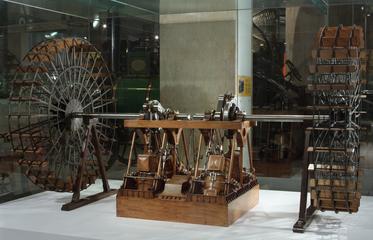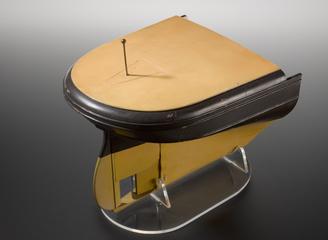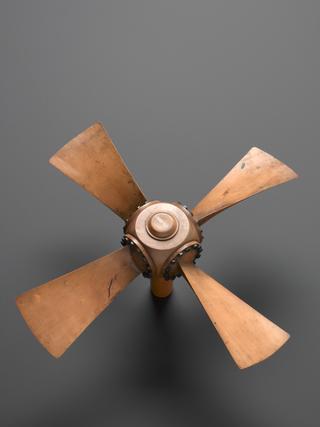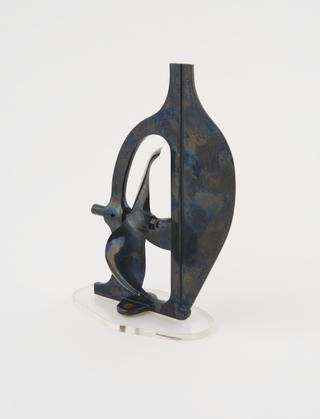
Prototype ring propeller





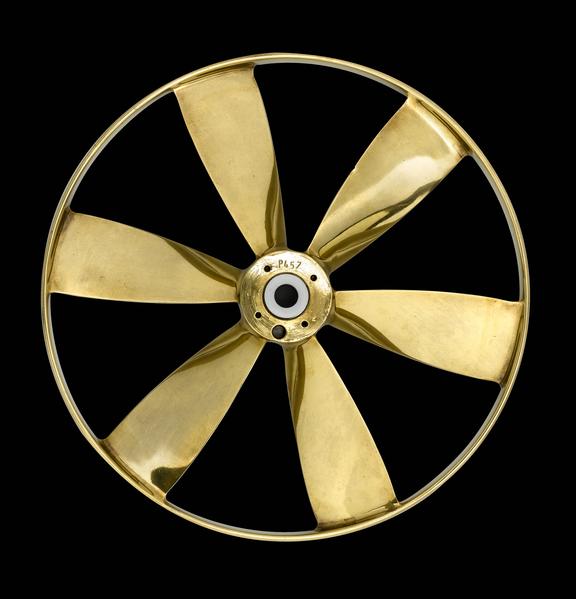
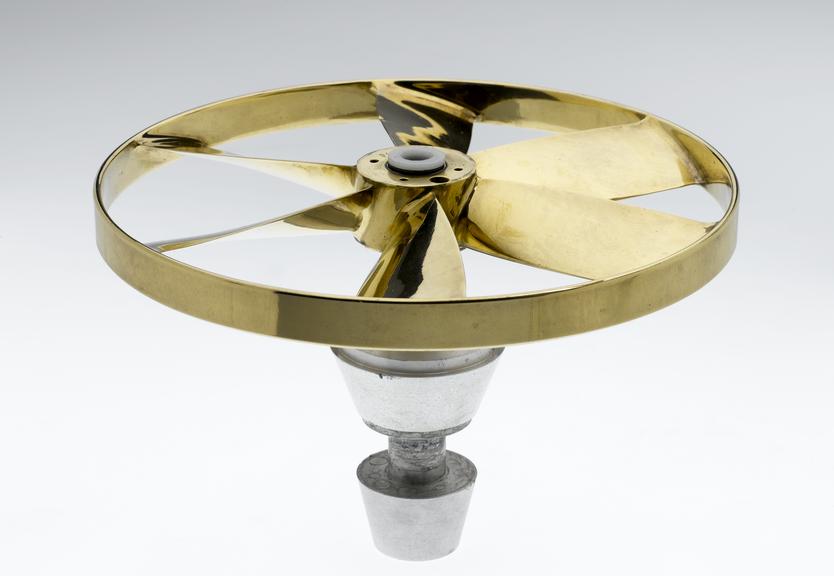


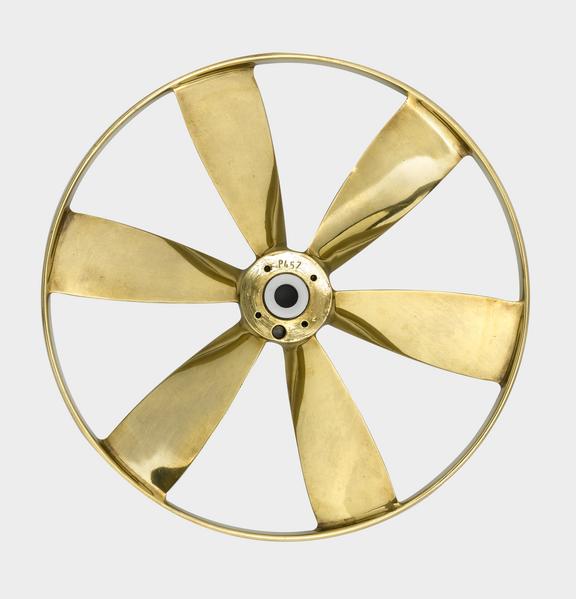
Prototype ring propeller, designed by Jamie Andrew with the help of Professor Ted Glover of Newcastle University, manufactured by Centrum Techniki Okretowej Ship Design and Research Centre, Gdansk, Poland for Triton Developments, Fogo, Duns, United Kingdom, 2003. Designed as a small boat propeller to operate at higher speeds with reduced cavitation and with reduced environmental damage compared with conventional designs and also to improve safety for marine mammals and swimmers.
A prototype small boat propeller designed to avoid cavitation at high speeds, improve safety for marine mammals and swimmers, and reduce the environmentally damaging scouring effects of propeller wash. It was designed by Jamie Andrew with the help of Professor Ted Glover of Newcastle University and tested in the Emerson Cavitation Tunnel at the University's School of Marine Science and Engineering in 2003. The work was sponsored by Triton Developments, a product development firm headed by Jamie Andrew. The enclosed six-bladed design takes advantage of the high rotation speeds of increasingly popular electric propulsion systems.
Details
- Category:
- Marine Engines
- Object Number:
- 2007-46
- Materials:
- bronze (copper, tin alloy) and stainless steel
- Measurements:
-
overall: 210 mm,
- type:
- propeller
- credit:
- Purchased (Triton Developments (UK) Limited)
